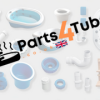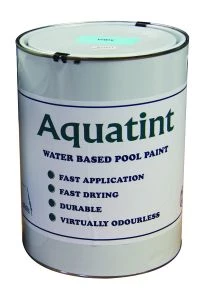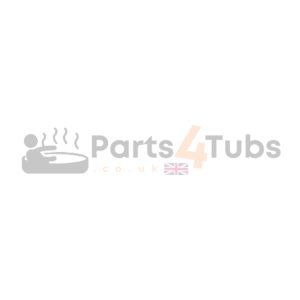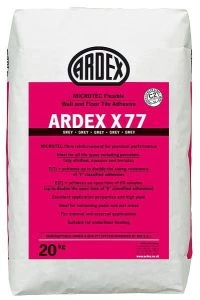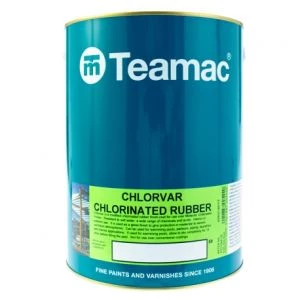Water Based Paint – White (5Ltrs) l PP-337-WHT5
£117.20 Inc VAT
Out of stock
Want to be notified when this product is back in stock?
Water Based Paint – White (5Ltrs) | PP-337-WHT5
Brilliant White Pool Finish with Professional-Grade Unicryl Technology
When your swimming pool, spa, or hot tub requires a pristine white finish that combines maximum brightness with reliable waterproof protection, the PP-337-WHT5 Unicryl WB Swimming Pool Paint delivers exceptional professional results. This 5-litre container provides the clean, brilliant white colour that creates sparkling, crystal-clear water effects while reflecting maximum light for the brightest possible pool appearance. Part of the trusted Unicryl WB range specifically formulated for aquatic environments with or without waterproof membranes, this advanced water-based coating offers superior adhesion, durability, and resistance to the demanding conditions of continuous pool use.
What is Unicryl WB White Pool Paint?
As a retailer of hot tub spare parts, I work with customers seeking various pool finishes, and white remains consistently popular for excellent reasons—particularly when it’s a professional-grade product like Unicryl WB. This water-based pool paint represents advanced coating technology specifically engineered for swimming pools, spas, and hot tubs. Unlike standard architectural paints that would fail rapidly when submerged, Unicryl WB is designed to withstand continuous water immersion, chemical treatments, UV exposure, and the mechanical stresses that pool surfaces endure daily.
The Unicryl WB formulation offers all the performance advantages of traditional solvent-based pool paints while providing the user-friendly benefits of water-based technology: easier application, lower odour, faster drying, simpler cleanup, and reduced environmental impact. This makes it ideal for both professional pool contractors and capable DIY enthusiasts undertaking pool renovation projects.
Understanding White Pool Finishes
The Timeless Appeal of White
White represents a classic pool colour choice with distinct advantages:
Maximum Brightness: White reflects the most light of any colour, creating brilliantly sparkling water that appears exceptionally clean, clear, and inviting.
Clean, Pristine Appearance: The crisp white finish signals cleanliness and proper maintenance—psychologically important for residential pools and absolutely essential for commercial facilities.
Light Enhancement: In pools with limited natural light, shaded locations, or indoor installations, white maximizes available light reflection, preventing dark, uninviting appearance.
Water Clarity Emphasis: White backgrounds make water clarity immediately obvious—any cloudiness, discoloration, or contamination is instantly visible, encouraging diligent chemical maintenance.
Design Versatility: White complements any surrounding deck colour, landscaping style, architectural design, or aesthetic direction without clashing or limiting design choices.
Timeless Classic: White never goes out of fashion, maintaining broad appeal across decades and changing design trends.
Contemporary Appeal: Modern pool design increasingly favours clean, minimalist aesthetics where white finishes are perfect.
Visual Effects and Light Interaction
White finishes create specific optical characteristics:
Brilliant Sparkle: Sunlight reflecting off white surfaces creates maximum sparkle and shimmer on the water surface—the hallmark of pristine pools.
Apparent Shallowness: White can make pools appear slightly shallower than darker colours—an advantage for wading pools, therapy pools, or when shallow appearance is desired, but consider this for deep diving pools.
True Water Colour: Water displays its actual colour more accurately over white—crystal clear water appears genuinely transparent, while any tint, cloudiness, or contamination is immediately evident.
Maximum Light Penetration: White allows maximum light penetration through water depth, brightening the entire pool environment even at depth.
Temperature Perception: Creates cool, refreshing visual impression appropriate for pool environments while maintaining bright, inviting character.
Key Features and Benefits
Advanced Unicryl WB Formulation
Professional-grade water-based technology delivers multiple advantages:
Low Odour Application: Minimal smell during application and drying—far more pleasant than solvent-based alternatives, especially critical in enclosed spaces, indoor pools, or residential areas.
Water Cleanup: Tools, equipment, and accidental spills clean up easily with water—no harsh solvents, special cleaners, expensive thinners, or hazardous waste disposal required.
Fast Drying Times: Water-based formulations typically dry faster than solvent-based paints, reducing overall project duration and downtime between coats.
Environmental Responsibility: Lower VOC (Volatile Organic Compound) content reduces environmental impact, improves air quality during application, and meets increasingly stringent regulations.
User-Friendly Safety: Reduced exposure to harsh chemical fumes protects applicator health, improves comfort during application, and eliminates many safety concerns.
Regulatory Compliance: Meets environmental and workplace safety regulations in jurisdictions with strict VOC limits or solvent restrictions.
Indoor Suitability: Lower odour and reduced fume levels make water-based formulations significantly more appropriate for indoor pool applications.
Engineered for Aquatic Environments
Unicryl WB is specifically designed for pool and spa demands:
With or Without Membranes: Versatile formulation suitable for pools with existing waterproof membranes and those without—providing flexibility for various pool construction types and renovation scenarios.
Continuous Water Immersion: Engineered to perform under constant water contact without softening, peeling, blistering, wrinkling, or degrading.
Chemical Resistance: Withstands exposure to chlorine, bromine, salt chlorination systems, pH adjusters, algaecides, shock treatments, clarifiers, and other pool chemicals at typical concentrations.
Superior Adhesion: Bonds securely to properly prepared surfaces including concrete, cement render, fibreglass, existing waterproof membranes, and previously painted surfaces.
Flexibility and Movement: Accommodates minor substrate movement without cracking—essential for pools experiencing thermal expansion, minor settling, or slight structural movement.
Waterproofing Protection: Provides effective water barrier protecting underlying pool shell structure from water penetration, freeze-thaw damage, and moisture-related deterioration.
Algae Resistance: Formulation resists algae growth on painted surface when proper water chemistry and sanitation are maintained.
UV Stability and Durability
Protection against environmental challenges:
Colour Retention: White pigments and advanced UV stabilizers resist yellowing and discoloration from intense UV exposure in outdoor installations.
Film Integrity: UV protection prevents breakdown of the paint film itself from prolonged sun exposure and harsh outdoor conditions.
Chalking Resistance: Formulated to resist surface chalking that can occur with UV exposure in lesser-quality coatings.
Long-Term Performance: Maintains crisp, bright white appearance for extended periods despite harsh outdoor conditions, intense sunlight, and chemical exposure.
Outdoor Optimization: Specifically engineered for exposed outdoor pool applications with direct sunlight and weather exposure.
Weather Resistance: Formulated to withstand temperature extremes, moisture variations, and environmental stresses.
Professional Application Characteristics
Engineered for successful application:
Excellent Flow and Leveling: Applies smoothly with brush, roller, or spray equipment with good self-leveling characteristics for uniform finish.
Coverage Efficiency: 5-litre container provides substantial coverage for typical residential pool maintenance and renovation projects.
Appropriate Working Time: Adequate open time allows proper application technique, brush/roller work, and maintaining wet edges without rushing.
Good Build Capability: Achieves required film thickness, hiding power, and protective properties in reasonable number of coats.
Optimal Recoat Timing: Appropriate drying time between coats enables efficient project completion without excessive waiting or production delays.
Hiding Power: White pigments typically provide excellent hiding power over most substrates, though multiple coats still necessary for durability.
Applications
Swimming Pool Refinishing
Primary application for this professional white paint:
Concrete Pool Shells: Painted finishes for rendered concrete pools requiring refinishing, maintenance, or colour change to brilliant white.
Fibreglass Pool Restoration: Refreshing faded, yellowed, stained, or worn fibreglass pool surfaces with proper preparation and appropriate priming.
Membrane-Protected Pools: Coating over existing waterproof membranes when membrane remains structurally sound but appearance needs refreshing.
Plaster Pool Renovation: Coating over deteriorated, stained, or discoloured plaster when complete replastering isn’t immediately feasible or within budget.
Interior Pool Surfaces: All submerged surfaces requiring protective, attractive brilliant white finish.
Pool Steps and Features: Built-in steps, benches, love seats, and other integrated features requiring matching white finish.
Spa and Hot Tub Refurbishment
Smaller aquatic installations benefit from brilliant white:
Concrete Spas: Rendered concrete spa shells needing clean, bright white finish restoration.
Built-In Hot Tubs: Permanent hot tub installations requiring refinishing with pristine white appearance.
Therapy Pools: Small therapy or exercise pools in healthcare, rehabilitation, or residential settings where clean appearance is essential.
Hydrotherapy Installations: Commercial or residential hydrotherapy facilities where sanitary-looking white finish is preferred or required.
Water Features and Decorative Installations
Various aquatic design applications:
Reflecting Pools: Decorative water features where white maximizes light reflection and creates mirror-like effects.
Fountains: Water fountain basins and surfaces requiring water-resistant white coating with clean appearance.
Commercial Water Displays: Retail, hospitality, or public water features requiring pristine, well-maintained appearance.
Koi Ponds: When light-coloured finish is desired for fish visibility and maintaining clean water appearance.
Decorative Pools: Architectural or landscape pools where bright white enhances overall design impact.
Renovation and Transformation Projects
Transform existing pool appearance:
Complete Pool Repaints: Full pool refinishing with fresh, brilliant white appearance.
Colour Changes: Converting from blue, aqua, grey, or other colours to clean white for updated, contemporary appearance.
Aesthetic Modernization: Updating pool appearance as part of broader landscape renovation or property improvement.
Stain and Discoloration Coverage: Covering unsightly staining, yellowing, or uneven appearance with beautiful new white finish.
Commercial Renovations: Updating commercial pool facilities to maintain pristine, well-maintained appearance.
Surface Preparation Critical
Success depends absolutely on meticulous preparation:
Comprehensive Surface Assessment
Thoroughly evaluate all existing conditions:
Current Coating Condition: Inspect meticulously for peeling, flaking, chalking, poor adhesion, blistering, cracking, or any coating failures requiring removal.
Surface Integrity: Identify all cracks, spalling, hollow areas, delamination, structural defects, or damage requiring repair before coating.
Contamination Issues: Look for algae growth, mineral deposits, calcium scaling, oils, greases, sunscreen residues, body oils, or other contaminants preventing proper adhesion.
Previous Coating Type: Determine what’s currently on the surface and verify compatibility with water-based Unicryl WB system.
Membrane Condition: If pool has waterproof membrane, assess its structural condition—intact membranes can be coated; significantly damaged membranes may require repair or replacement.
Substrate Soundness: Evaluate whether underlying concrete, plaster, fibreglass, or render is structurally sound and suitable for coating application.
Thorough Preparation Process
Meticulous, comprehensive preparation is absolutely essential:
- Complete Drainage: Drain pool completely and allow adequate initial drying period before beginning work.
- Intensive, Thorough Cleaning: Remove all contaminants through:
- Acid washing (for concrete/plaster surfaces following proper procedures)
- High-pressure washing at appropriate pressure for surface type
- TSP or specialized pool cleaner scrubbing
- Multiple thorough rinse cycles ensuring complete contamination removal
- Algae and stain treatment if needed with appropriate chemicals
- Remove All Loose Material:
- Scrape away any loose, flaking, poorly adhered paint completely
- Sand or grind smooth any rough edges, ridges, or raised areas
- Remove any chalking, powder, or degraded coating material
- Ensure only sound, well-adhered material remains on surface
- Repair All Defects Completely:
- Fill all cracks with appropriate repair materials designed for underwater use
- Patch holes, spalled areas, and surface defects with compatible materials
- Repair or address any membrane damage if applicable to your pool
- Allow all repairs to cure fully according to manufacturer recommendations
- Surface Profile Creation:
- For new concrete: acid etching opens pores providing mechanical adhesion
- For smooth, sealed surfaces: abrading or profiling creates texture for better bonding
- Creates adequate surface profile ensuring optimal paint adhesion
- Thorough Rinsing and Neutralization:
- Rinse away all cleaning chemicals and acid residues completely
- Neutralize any remaining acid with appropriate neutralizing solution
- Ensure surface pH is appropriate for coating application
- Multiple rinse cycles may be necessary for complete removal
- Complete Drying Period:
- Allow surface to dry completely—moisture is the primary cause of adhesion failure
- May require days to weeks depending on climate, season, humidity, substrate thickness
- Test moisture content with appropriate calibrated moisture meter
- Never rush this absolutely critical step regardless of project pressure
- Final Pre-Paint Cleaning:
- Remove all dust, debris, loose particles immediately before painting begins
- Ensure surface is completely clean, dry, and ready for coating application
- Light vacuum or compressed air can remove final dust
Critical Drying Requirements
Cannot Be Overemphasized: Surface must be completely, thoroughly dry before painting begins. Moisture in the substrate will:
- Prevent proper paint adhesion to surface
- Cause blistering, bubbling, and premature peeling within weeks or months
- Lead to rapid, comprehensive coating failure
- Result in having to remove all failed coating and repeat entire process
For concrete and plaster substrates, moisture content should typically be below 12-15% before coating application. For fibreglass and sealed surfaces, ensure no water is trapped beneath surface. Use appropriate moisture testing equipment—visual assessment and touch are inadequate for this critical determination.
Application Guidelines
Optimal Environmental Conditions
Apply only under suitable conditions:
Temperature Range: Apply when surface and air temperature are within manufacturer’s specified range (typically 10-30°C / 50-86°F)—verify product specifications.
Humidity Considerations: Avoid application during very high humidity (above 85%) which significantly impedes proper drying and curing.
Weather Forecast: Never apply if rain is forecast within drying/curing period—typically minimum 24-48 hours for touch dry, much longer for full cure.
Wind Conditions: Excessive wind can cause too-rapid drying, dust contamination, overspray issues, or application difficulties.
Sun Exposure: Avoid applying in direct intense sunlight which causes surface overheating and paint drying too rapidly, preventing proper film formation.
Optimal Timing: Early morning or late afternoon application often provides better, more stable conditions than harsh midday heat.
Seasonal Considerations: Spring and fall often provide ideal conditions; summer heat and winter cold can both create challenges.
Application Methods and Techniques
Multiple professional application methods:
Roller Application (Most Common Method):
- Use quality roller cover with nap length appropriate for surface texture (typically 10-15mm for pool surfaces)
- Provides good coverage and film build with efficient, productive application
- Work in manageable sections maintaining wet edge to avoid visible lap marks
- Apply consistent, even coats avoiding over-rolling which thins film and reduces performance
- Use extension pole for large areas and deep end access
Brush Application:
- Essential for detail work, edges, corners, steps, fittings, drains, and areas inaccessible to roller
- Use quality synthetic brushes specifically designed for water-based coatings
- Particularly useful for first coat on very porous surfaces where penetration is beneficial
- Work to minimize heavy brush marks through proper technique and light finishing strokes
Spray Application (Professional Method):
- Provides smooth, uniform finish on large pool areas with excellent efficiency
- Requires specialized equipment (typically airless sprayer rated for water-based coatings)
- Demands expertise, experience, and proper technique for optimal results
- Back-rolling immediately after spraying often recommended for maximum film build, adhesion, and durability
- Proper masking and overspray protection essential
Multi-Coat System Requirements
Achieve proper film thickness, hiding, and performance:
Primer/First Coat: On bare, heavily prepared, very porous, or difficult surfaces, first coat seals substrate and provides foundation for subsequent coats.
Intermediate Coats: Build film thickness to required level for durability, complete hiding power, and long-term performance.
Final Coat: Last coat provides ultimate appearance, surface characteristics, colour accuracy, and maximum protective properties.
Typical Requirements: Most pools require absolute minimum 2-3 coats for proper performance, durability, and hiding power. Very porous substrates, dark-coloured substrates, or colour changes from dark to white may require additional coats for complete hiding and adequate protective film build.
Film Build Importance: Adequate film thickness is essential for durability—skimping on coats to save money guarantees premature failure.
Coverage Rate Expectations
5-Litre Container Coverage: Actual coverage varies significantly based on multiple factors:
- Surface porosity (porous concrete absorbs substantially more paint than sealed surfaces)
- Surface texture and roughness (heavily textured surfaces require more paint than smooth)
- Application method (spray typically uses 20-30% more than roller application)
- Substrate colour (covering dark colours with white requires more coats and more paint)
- Application skill and technique (experienced applicators achieve better coverage efficiency)
- Environmental conditions (hot, dry, windy conditions increase consumption)
Typical Coverage Range: Generally 6-10 square meters per litre per coat, meaning 5 litres covers approximately 30-50 square meters per coat under average conditions.
Calculate Requirements Carefully: Accurately measure your pool’s total surface area including walls, floor, steps, and features. Determine number of coats needed based on substrate and current colour. Calculate total paint requirement with appropriate safety margin (typically 10-15% extra). Always purchase adequate material—running short mid-project creates problems.
Drying, Curing, and Pool Filling
Understanding Drying Stages
Different phases have distinct characteristics and requirements:
Touch Dry: Surface no longer tacky to light touch—typically 2-4 hours depending on temperature, humidity, airflow, and film thickness.
Recoat Time: Minimum time before applying next coat—typically 4-24 hours depending on environmental conditions and manufacturer specifications. Too soon disturbs previous coat; too long may require additional surface preparation for proper inter-coat adhesion.
Full Cure: Complete chemical cure achieving maximum hardness, adhesion, chemical resistance, and performance—typically minimum 5-7 days, potentially significantly longer in cool, humid, or poor-ventilation conditions.
Critical Pool Filling Requirements
Absolutely Mandatory—No Exceptions: Do not fill pool until coating is fully cured according to manufacturer specifications. Premature water contact will:
- Completely, catastrophically ruin the finish
- Cause immediate widespread peeling, blistering, or softening
- Waste all time, materials, money, and effort invested in project
- Require complete removal of failed coating and total re-application
- Potentially damage substrate requiring additional repair work
Minimum Wait Time: Typically 5-7 days absolute minimum under ideal conditions, but many coating systems and most real-world conditions require 7-14 days or longer. Cool temperatures (below 20°C), high humidity (above 70%), poor ventilation, thick film build, or shaded conditions all extend necessary curing time significantly—sometimes to 14-21 days.
Verification Before Filling: Surface should be fully hard with no flexibility, completely cured with no chemical smell, and show absolutely no softness, tackiness, or any indication of incomplete cure before filling begins. When in doubt, wait longer—patience here prevents disaster.
Initial Fill and Chemical Startup
When coating is fully cured and verified ready:
- Clean Water Fill: Fill pool with clean, filtered water avoiding contamination, debris introduction, or sediment disturbance.
- Gradual Filling Process: Fill gradually at moderate rate avoiding shock to new coating from excessive water pressure or rapid temperature changes.
- Careful, Gradual Chemical Balance:
- Balance water chemistry carefully, gradually, and conservatively
- Avoid extreme pH levels, chlorine spikes, or aggressive shock treatments initially
- Bring chemistry parameters to optimal ranges gradually over first week, not immediately
- Monitor closely with quality test kit and adjust gently
- Slightly lower chlorine levels first few days acceptable while coating fully hardens
- Extended Initial Monitoring Period: Watch carefully for any coating problems during first 2-4 weeks—bubbling, softening, peeling, discoloration, or delamination indicate serious problems requiring immediate professional assessment.
- Gentle Initial Use Protocol:
- Avoid aggressive brushing, intensive vacuuming, or harsh cleaning methods for first 2-3 weeks while coating fully hardens in water environment
- No shock treatments or aggressive chemical additions first week
- Allow coating to acclimate to water environment gradually
Maintenance and Service Life
Expected Lifespan
Typical Service Life: Properly applied Unicryl WB pool paint typically lasts 2-5 years depending on multiple critical factors:
- Pool usage intensity and frequency (high-use commercial pools wear coatings significantly faster than occasional-use residential pools)
- Water chemistry maintenance quality and consistency (properly balanced chemistry dramatically extends coating life)
- Climate and UV exposure intensity (harsh sun, extreme temperatures accelerate degradation)
- Surface preparation quality (proper preparation is THE single biggest factor affecting coating lifespan—poor prep guarantees early failure)
- Application quality, technique, and film build (proper application and adequate coats extend service life)
- Pool type, construction, and substrate condition (some substrates perform better than others long-term)
White finishes may show discoloration, yellowing, or staining more readily than coloured finishes, but this affects appearance before structural coating failure.
Maintenance Practices Extend Coating Life
Proper, consistent ongoing care maximizes longevity:
Consistent Water Chemistry Management: Maintain balanced water chemistry consistently—chemical extremes and imbalances dramatically accelerate coating degradation:
- pH: 7.2-7.6 optimal range
- Free Chlorine: 1-3 ppm for residential pools, appropriate levels without excessive spikes or prolonged highs
- Total Alkalinity: 80-120 ppm properly balanced
- Calcium Hardness: 200-400 ppm within appropriate range for your water source
- Avoid prolonged periods of severely imbalanced chemistry
- Test regularly with quality test kit, adjust promptly and appropriately
Appropriate Cleaning Methods and Tools:
- Use soft or medium nylon brushes specifically suitable for painted pool surfaces
- Avoid abrasive cleaning tools, harsh scrubbing pads, metal brushes, or aggressive techniques that damage coating
- Regular gentle brushing prevents buildup requiring aggressive intervention later
- Address stains and deposits promptly before they become severe or permanent
- Use appropriate pool cleaners and chemicals designed for painted surfaces
Proper Chemical Handling Procedures:
- Always add chemicals to pool return, deep end, or main drain area—never dump concentrates directly on painted surfaces
- Dissolve granular chemicals completely in bucket of water before adding to pool
- Avoid shocking treatments, concentrated chlorine, or acid directly against pool walls
- Distribute chemicals properly throughout pool water for even dilution
- Follow manufacturer recommendations for all chemical additions
Stain Prevention and Prompt Treatment:
- Address stains, discoloration, mineral deposits, or organic material promptly before they become permanent or penetrate coating
- White shows staining more readily than coloured finishes—vigilance important
- Use appropriate stain treatments designed for painted pool surfaces
Seasonal Care Protocols: In seasonal climates, properly winterize pools according to best practices and manufacturer recommendations to protect coating during closed months.
Planning for Eventual Repainting
When repainting eventually becomes necessary:
Comprehensive Condition Assessment: Thoroughly evaluate both coating condition and underlying surface condition—address any substrate problems before recoating.
Meticulous Preparation: Clean meticulously, remove any failed coating completely and properly, repair all defects, and prepare surface according to specifications—shortcuts and compromises guarantee premature failure of new coating.
Colour Consistency: Using same PP-337-WHT5 white ensures exact colour matching with no visible difference, or choose different colour for completely new, fresh appearance.
Comprehensive Project Documentation: Keep detailed records of paint type, product code, manufacturer, application dates, environmental conditions, number of coats applied, problems encountered, and any other relevant information for future reference and planning.
Optimal Timing and Conditions: Plan repainting project during optimal weather conditions (moderate temperatures, low humidity, stable forecast) with adequate time available for proper drying, full curing, and testing before pool use is required by season or schedule.
Technical Specifications
| Specification | Detail |
|---|---|
| Product Code | PP-337-WHT5 |
| Product Name | Unicryl WB Swimming Pool Paint |
| Colour | White |
| Container Size | 5 Litres |
| Base Type | Water Based |
| Finish Type | Typically satin or semi-gloss (verify product technical data) |
| Application | Swimming pools, spas, hot tubs, water features |
| Suitable Surfaces | Concrete, cement render, fibreglass, waterproof membranes, previously painted surfaces |
| Membrane Compatibility | Suitable for pools with or without waterproof membranes |
| Coverage | Approximately 30-50 m² per 5 litres per coat (varies significantly by surface) |
| Number of Coats Required | Typically 2-3 coats minimum (may require more for complete hiding) |
| Touch Dry Time | 2-4 hours (temperature, humidity, and film thickness dependent) |
| Recoat Time | 4-24 hours (verify manufacturer specifications for your conditions) |
| Full Cure Time | Minimum 5-7 days before filling (often 7-14 days—verify specifications) |
| Application Temperature | Typically 10-30°C / 50-86°F (verify product specifications) |
| Application Methods | Roller (most common), brush (detail work), spray (professional) |
| Cleanup | Water and soap |
| VOC Content | Low (water-based formulation meeting regulations) |
| Chemical Resistance | Chlorine, bromine, salt, pH adjusters, typical pool chemicals |
| UV Resistance | Yes – formulated for outdoor exposure with UV stabilizers |
| Water Resistance | Excellent – designed for continuous immersion |
| Expected Lifespan | 2-5 years (varies significantly by conditions, usage, maintenance) |
| Category | Pool Shell Finishes |
| Current Status | Out of Stock |
Why Choose Unicryl WB White?
The PP-337-WHT5 Unicryl WB Swimming Pool Paint in white represents an excellent choice when you want:
- Maximum brightness and brilliance creating sparkling, inviting pool water
- Clean, pristine appearance appropriate to any design style or setting
- Professional-grade Unicryl quality with proven aquatic performance
- Modern water-based technology with easier application and cleanup than solvent-based
- Versatile compatibility with pools having or not having waterproof membranes
- Environmental advantages and user-friendly safety characteristics
- Timeless, classic aesthetic that maintains appeal across decades
- Professional results achievable with proper preparation and application technique
Whether you’re creating a brilliantly bright new pool finish, converting from another colour, updating an aging pool’s appearance, or maintaining a spa or water feature, this Unicryl WB paint in brilliant white provides the attractive, durable, professional-quality coating your aquatic installation deserves.
Note: This product is currently out of stock. Use the “Notify me” feature to be alerted when stock becomes available. Success with pool paint depends critically on proper surface preparation (the single most important factor), correct application under suitable environmental conditions, adequate curing time before filling (typically 7-14 days minimum in real-world conditions), and proper ongoing water chemistry maintenance. Always consult detailed product technical data sheets and application instructions from the manufacturer. Surface preparation cannot be overemphasized—it is far more important than the paint itself in determining coating success or failure. If uncertain about any aspect of pool painting, strongly consider consulting with professional pool finishing contractors experienced with Unicryl products and water-based pool coating systems.
Related products
Pool Shell Finishes
Pool Shell Finishes
Pool Shell Finishes
Pool Shell Finishes
Pool Shell Finishes
Water Based Paint – Forget Me Not (Blue) (5Ltrs) l PP-337-18E51
Pool Shell Finishes
Pool Shell Finishes
Chlorinated Rubber Paint – Forget Me Not (Blue) (5Ltrs) l PP-519-18E51
Pool Shell Finishes

